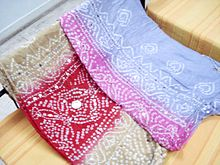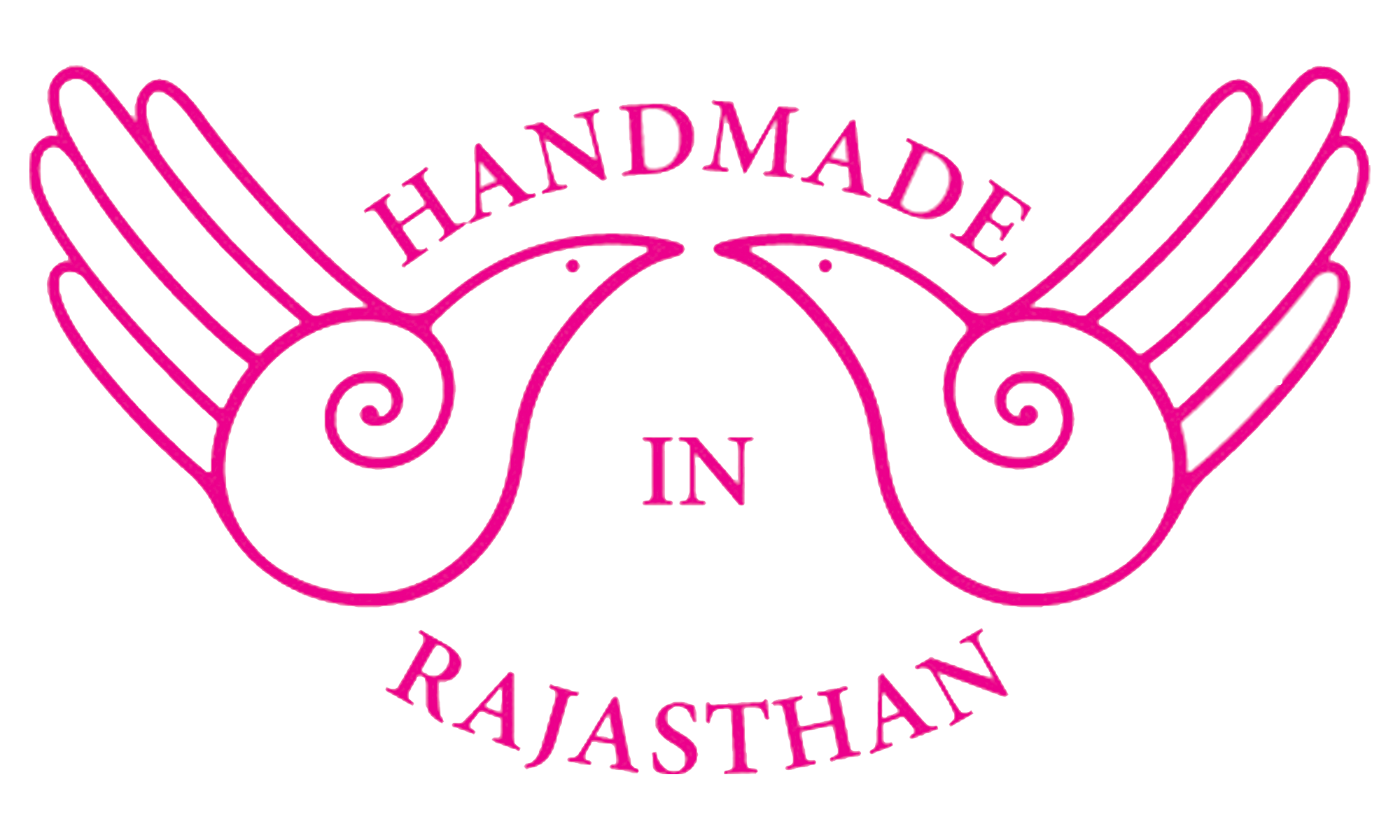- Home
- About US
- Art and Craft
- Artisans
- Master Crafts Persons
- Supporting Institutions
- News and Events
- Schemes
- Contact us
- Contact

Bandhani is a type of tie-dye textile decorated by plucking the cloth with the fingernails into many tiny bindings that form a figurative design. The term bandhani is derived from the Sanskrit word banda ("to tie"). Today most Bandhini making centers are situated inGujarat, Rajasthan, Sindh, Punjab region and in Tamil Nadu where it's known as Sungudi. The earliest example of the most pervasive type of Bandhani dots can be seen in the 6th century paintings depicting. Bandhani is also known as Bandhej, Bandhni, Piliya, and Chungidi in Tamil and regional dialects. Other tying techniques include Mothra, Ekdali and Shikari depending on the manner in which the cloth is tied. The final products are known withvarious names including Khombi, Ghar Chola, Patori and Chandrokhani
Overview-The art of Bandhani is a highly skilled process. Thetechnique involves dyeing a fabric which is tied tightly with a thread at several points, thus producing a variety of patterns like Chandrakala, BavanBaug, Shikari etcetera; depending on the manner in which the cloth is tied. The main colours used in Bandhani are yellow, red, blue, green and black.
The main colours used in Bandhani are natural. As Bandhani is a tie and dye process, dying is done by hand and hence best colours and combinations are possible in Bandhanis.
The Bandhani work has been exclusively carried out by the Khatri community of Kutchh and Saurashtra. A meter length of cloth can have thousands of tiny knots known as 'Bheendi' in the local language ('Gujarati'). These knots form a design once opened after dyeing in bright colours. Traditionally, the final products can be classified into 'khombhi', 'Ghar Chola', 'Chandrakhani', 'Shikari', 'Chowkidaar', 'Ambadaal' and other categories.
Ahmedabad in India is known for Bandhanis. Bandhani work is also done in Rajasthan state but having different types of colours and designs than the Kutch and Saurashtra of Gujarat.
In Bandhani, different colours convey different meanings. People believe that wearing Red brings good luck to a newly wed's life.
History-Bandhani work in India was started by the Khatri Community of Gujarat The term `Bandhani` is derived from the word `Bandhan` that means tying up. It is an ancient art practise that is mainly used in the state ofGujarat and Rajasthan. Some 5000 years ago Indian Tie & Dye or Bandhani wasstarted. Places in Rajasthan like Jaipur, Sikar, Bhilwara, Udaipur, Bikaner,Ajmer, and Jamnagar in Gurjarat are the well known centres producing odhnissarees and turbans in Bandhani. Different communities in Rajasthan have for ages followed the tradition on tying turbans with different patterns of bandhani on their heads. These were used to identify which community the person belonged to.
Market-Bandhani is being sold all over India and the demand has increased over the past few decades. Sales go up during the festive and wedding seasons in India. The bulk of the market is domestic with the main market being in Gujarat. As per survey, the most exclusive Bandhanis are being sold at well-known retailers Khatri Jamnadas Bechardas inMumbai,and Khatri Mangalya Heritage Bandhani in Ahmedabad.

